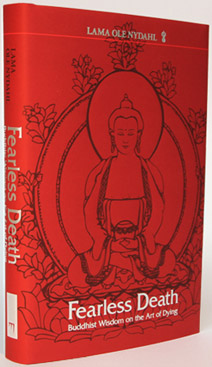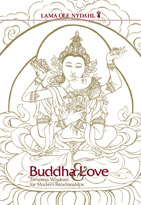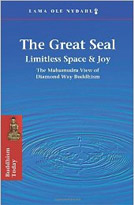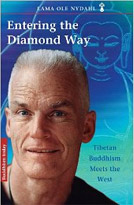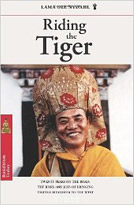How can I help someone who is dying?
With industrialization and the progress of medicine in the nineteenth century, the attention of the West shifted subtly from a dying person to a dying body. Little by little, one discovered life-prolonging methods that were associated with stays in hospitals and unfamiliar nurses. The surroundings became colder, often impersonal, and goal-related. The division of the tasks into various professional branches also changed the relationship with the one who was dying or dead.
(Fearless Death, page 93)
A close relative, trusted friend, or professional terminal caregiver can do a lot to ease the final days or weeks of a dying person. Without dwelling in false hopes of recovery and with unshakeable kindness, the caregiver should gently help the patient come to terms with the inevitable demise of his/her current body. It is also useful to encourage positive reminiscences of the good experiences in life while making peace with any unresolved issues or grudges.
The precious freedom of being able to forgive dissolves the shared bad karma, and difficult beings will come back as friends or will not appear again in a future life. On the other hand, if we keep the grudge, we do not get rid of them and the annoying sandbox games do not end. Even on our deathbed we can still excuse ourselves for our own stupid behavior and express our gratitude toward others. […] Until recently, this was more Buddhist than psychological wisdom, but the latest research on positive psychology confirms that people who generously forgive others and wish them everything good, feel better, despite the suffering that the others have caused. Forgiveness is simply less prickly than revenge and anger.
(Fearless Death, page 60)
A serene attitude would also provide a clearer view that mind’s ability to know and understand does not terminate with the death of the body, just as a malfunctioning radio does not imply an end to radio broadcasts.
The various radio programs are still running, but the receiver (the body) only manages to pass on some scratchy sounds to the world. But, at the same time, mind itself is like timeless space which, all-encompassing and unchanging, generates everything. It cannot die or disappear, because it neither had come to be nor was composed of anything. What one sees as decaying and dying is only the body and one clings strongly to it until death. If, as a companion of a beloved wonderful person, one knows that nothing can be lost and that, after maturation in the intermediate state, the tendencies accumulated in the store consciousness of mind will appear again in the next life, one can relax.
(Fearless Death, page 94)
If one is able, at least conceptually, to see the process of dying like changing one’s clothes, it becomes easier for everybody.
(Fearless Death, page 95)
The alleviation of fear is one of the most generous gifts we can give to anyone. It the dying person is open to Buddhist teachings, an even greater gift would be the informed guidance into the final phase of life in order to take advantage of the unique opportunity this experience presents for the recognition of one’s indestructible true nature. Imagining a magnificent red Buddha form above the head, listening to mantras like OM AMI DEWA HRIH, and recalling the wisdom of the teachings and the kindness of the teachers would transform the dying experience into a triumphal victory.
With a guided meditation one can help the dying person to adjust mind again to what is essential. With this, one succeeds in finding space and freedom in one’s own consciousness again.
(Fearless Death, page 107)
An entire chapter of Fearless Death is devoted to detailed practical advice for terminal caregivers, extending also to the after-death aspects and to the management of grief and mourning.
